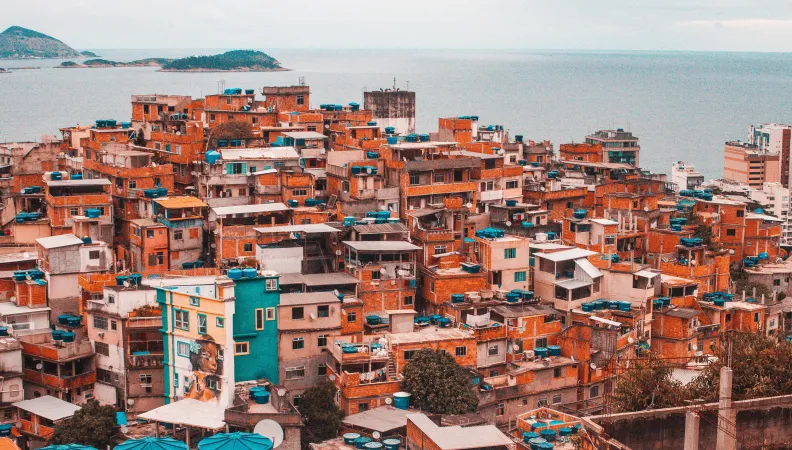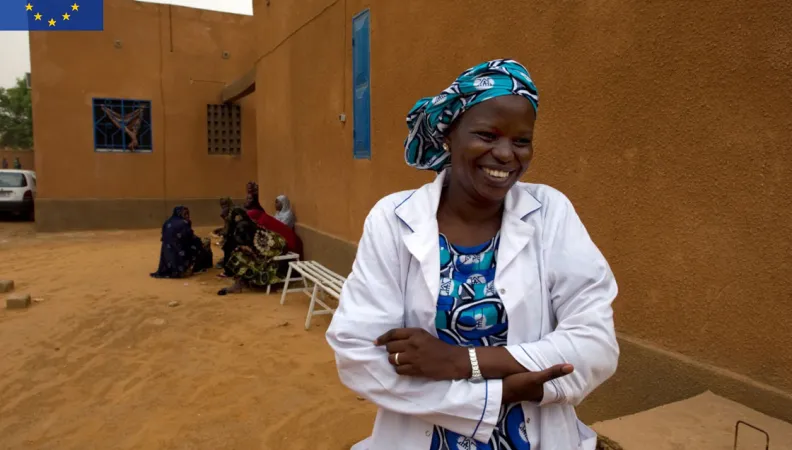Ouagadougou, Burkina Faso
Ouagadougou
Burkina Faso
 This research project focused on collective arrangements for access to land and housing in developing cities that are linked with the concept of commons. It studied the implementation of some collective forms of land use in developing cities and their effects, particularly in terms of access to land and housing, reduction of urban inequalities and social inclusion.
This research project focused on collective arrangements for access to land and housing in developing cities that are linked with the concept of commons. It studied the implementation of some collective forms of land use in developing cities and their effects, particularly in terms of access to land and housing, reduction of urban inequalities and social inclusion.
Context
Despite a renewed interest for the notion of “commons” within the academic world, little work has been done about land and housing issues in cities of the Global South.
Yet access to urban land is a major issue for dwellers of these rapidly growing cities and a determining factor for the improvement of their living conditions and for their access to “adequate housing”, according to UN terminology. The mainstream approach to urban land tenure, based on full individual private ownership and the free market, generates speculation and land grabbing, and exclusion of the most precarious households.
The critical dimension of the commons notion opens up innovative ways to produce housing in the Global South, according to plural perspectives that take into consideration the inhabitant’s needs and their agency abilities.
Goal
This research project aimed to highlight the diversity of hybrid, permeable, evolving commons within space and time. These commons aim at getting and securing access rights to land and housing and associated services, which often arise from unexpected opportunities.
The research team looked at innovative ways of holding land: commonly held, with a housing function and in a nonspeculative perspective (when the transfer of land is carried out according to a framework decided beforehand by a community, without any capital benefit).
Method
The methodology was based on case studies in developing cities:
- The first phase of the study (2017-2018) led to three field surveys in Burkina Faso, Kenya and India.
- The second phase (2018-2020) consisted of two additional field surveys (Brazil, Mexico), as well as the follow-up of the work carried out in New Caledonia by students in the framework of the School of Urban Affairs (Master’s Degree « Urban Planning Cycle») of Sciences Po Paris.
The team consisted of:
- An academic with authorization to supervise research (HDR), who directed the study;
- A research engineer, who provided the scientific coordination of the study;
- Local researchers specialising in land and urban issues in survey countries.
The study consisted of five phases: documentary research, field research, data processing, drafting of deliverables, valorisation of research findings.
Results
This research project resulted in the publication of several research papers:
- “Land-based commons for inclusive cities” (available in French): this research paper presents the conclusions of 8 case studies, focused on securing popular habitat through shared ownership of the land.
- “Does Mexico’s social land still bear commons?” (available in French): Mexican common land has undergone major transformations since the 1990s. This research paper presents the study on the outskirts of the metropolitan area of Mexico City led by the students of the Urban Planning Programme of Sciences Po Paris, under the supervision of Jean-François Valette.
- “Regularizing Rio favelas through land pooling?”: the paper sheds light on an original system of collective land regularization in precarious neighborhoods, which puts into practice the notion of “plural property” running through Brazilian law, and which defends the right of the inhabitants to remain in place.
- “User cooperatives in Uruguay: the challenge of housing as common” (available in Spanish)
The final report of the research project on urban land-based commons for housing in the Global South can be downloaded here.
All the publications and events related to the research project are listed on the following website: Communs fonciers pour l’habitat – Quelle contribution à l’inclusion urbaine dans les Suds ? (hypotheses.org)
Lessons learned
"The commons can be understood as a social policy of housing, offering access to housing to the most vulnerable social categories. Moreover, they can provide an alternative path to classical public housing policies which favor individual private property. Indeed, even though these initiatives emerge from dwellers organizations, they might be supported and framed by national governments. Often acknowledged, supported and even presented as standard to be followed, the commons have drawn increased attention recently from dwellers federations, associations, NGOs and international institutions that document their functioning and contribute to the international circulation of these alternative ideas." (Simonneau & Denis, 2021)
Contacts:
- Claire Simonneau, professor and researcher at Université Gustave Eiffel and researcher at the Laboratoire Techniques, territoires et sociétés (LATTS)
- Stéphanie Leyronas, research officier at AFD
 Legal notice EU (project) This research project examines the equity benefit of total health spending with particular focus on the recent Universal Health Coverage (UHC) reforms in Sub-Saharan Africa, by looking at the distributional incidence of health spending in three countries: Malawi, Zambia, and Burkina Faso. The research will shed light on the distributional incidence of total spending on health, public spending on health, and UHC-specific reform spending on health, looking both at individual beneficiaries and districts/facilities. The researchers involved in this project postulate that developing an analysis on two levels, individual beneficiaries and district/health facility, is highly innovative and can produce two parallel streams of findings, which, when pooled together, will offer a more comprehensive picture of the equitable or inequitable distributional incidence of the investments made in health.
Legal notice EU (project) This research project examines the equity benefit of total health spending with particular focus on the recent Universal Health Coverage (UHC) reforms in Sub-Saharan Africa, by looking at the distributional incidence of health spending in three countries: Malawi, Zambia, and Burkina Faso. The research will shed light on the distributional incidence of total spending on health, public spending on health, and UHC-specific reform spending on health, looking both at individual beneficiaries and districts/facilities. The researchers involved in this project postulate that developing an analysis on two levels, individual beneficiaries and district/health facility, is highly innovative and can produce two parallel streams of findings, which, when pooled together, will offer a more comprehensive picture of the equitable or inequitable distributional incidence of the investments made in health.
Contexte
The recent release of the Sustainable Development Goals reinforces the central role of health as a key element of human development, calling for further investments in health as part of a concerted effort to overcome poverty and inequalities worldwide. Specifically, SDG3 reiterates the importance of investing in policies that favor Universal Health Coverage (UHC), defined in relation to access to quality care and financial protection against the cost of illness. The urge to sustain and increase investments in health as part of an overall development policy is accompanied by the need to ensure that the investments made produce benefits for all groups in a society, contributing to reducing existing inequities in access and health status between the poor and the least poor. Evidence on the equity benefit of recent UHC reforms (ranging from user fee removal to results-based financing) is still limited. Similarly, evidence is lacking on whether investments in these recent reforms have altered spending on health at a national health, increasing the distributional incidence of this spending to benefit the poor rather than the least poor, as indicted by prior research.
This project is part of the first phase of the Research Facility on Inequalities, coordinated by AFD and funded by the European Commission's Directorate-General for International Partnerships over the 2017-2020 period. The first phase of the Facility has led to the conduct of 22 research projects and the publication of around 100 research papers and policy briefs.
Objectif
This project aims at assessing whether the distributional incidence of total and public spending on health has become more equitable over time, especially as a function of introducing UHC-specific reforms. The research objective is purposely set not only to describe the inequities in access and in health outcomes that may persist in spite of UHC-specific reforms, but also to explore more explicitly the link between the financial investments made and the benefits accrued across socio-economic groups. This choice stems from a wish to generate analytical evidence on the equity impact of the investments made in health, whether these investments are made by African countries themselves or with support from their development partners. The investigators trust that this evidence is much needed to direct and inform future investments in health. Moreover, keeping in mind this wish to inform policy making in a pragmatic manner, they plan to appraise their findings in the light of the different social and political circumstances that have shaped the emergence and implementation of the specific UHC policies and investments under analysis.
Méthode
The project expands the framework proposed by McIntyre and Ataguba published in 2011 and conducts a quasi-longitudinal benefit incidence analyses to assess the distributional incidence of total, public, and UHC-specific spending (such as user fee removal policies, targeted subsidies, or results-based financing) across all countries over time, measured both at the individual beneficiary level and at the district/health facility level. Traditionally, tables and concentration curves and indexes have been used to display the results of the Benefit Incidence Analysis (BIA). In addition to this traditional approach, the investigators plan to generate maps based on the BIA results to illustrate spatial inequities in the distributional incidence of spending on health.
Furthermore, they will appraise findings in the light of the specific circumstances within which policy decisions on health have been reached in each country, to be able to explain, from a qualitative point of view, what policy elements might have contributed to generate greater or smaller equity.
Results
You may find the research papers here:
- Estimating the distributional incidence of healthcare spending on curative health services in Sub-Saharan Africa: Benefit incidence analysis in Burkina Faso, Malawi and Zambia
- Estimating the distributional incidence of healthcare spending on maternal health services in Sub-Saharan Africa: Benefit incidence analysis in Burkina Faso, Malawi, and Zambia
- Distributional effects of healthcare spending : lessons from Burkina Faso, Malawi, and Zambia
- Assessing inequalities in healthcare spending in Burkina Faso, Malawi, and Zambia: data and methods
- Inequalities in Maternal Healthcare spending: Evidence from Burkina Faso
- Inequalities in healthcare spending on curative services: evidence from Burkina Faso
- Inequalities in maternal healthcare spending: evidence from Zambia
- Inequalities in healthcare spending on curative services: evidence from Zambia
- Inequalities in maternal healthcare spending: evidence from Malawi
- Inequalities in healthcare spending on curative services: evidence from Malawi
Contact:
Cecilia Poggi, Research Officer, AFD
